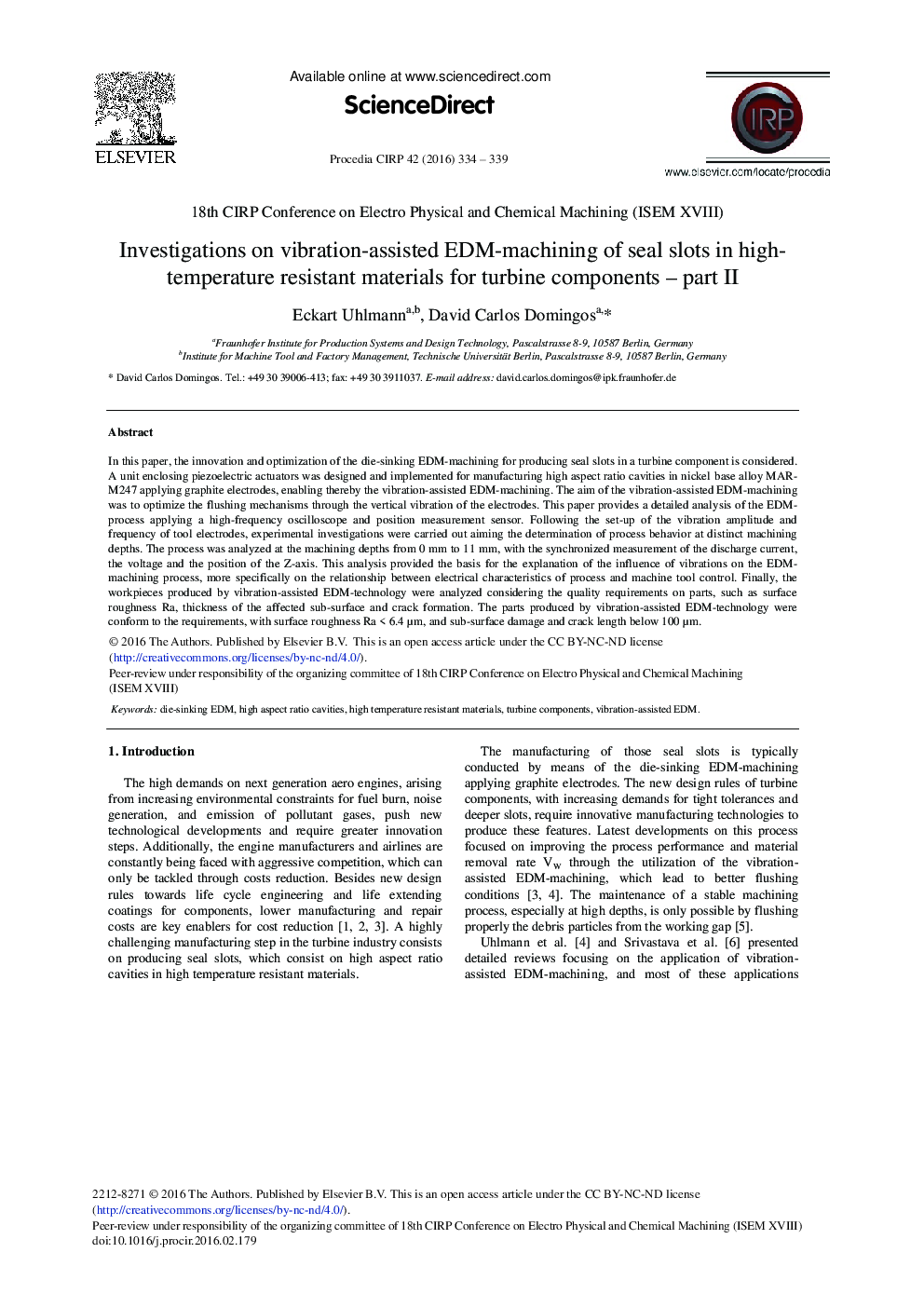| کد مقاله | کد نشریه | سال انتشار | مقاله انگلیسی | نسخه تمام متن |
|---|---|---|---|---|
| 1698962 | 1519310 | 2016 | 6 صفحه PDF | دانلود رایگان |

In this paper, the innovation and optimization of the die-sinking EDM-machining for producing seal slots in a turbine component is considered. A unit enclosing piezoelectric actuators was designed and implemented for manufacturing high aspect ratio cavities in nickel base alloy MAR-M247 applying graphite electrodes, enabling thereby the vibration-assisted EDM-machining. The aim of the vibration-assisted EDM-machining was to optimize the flushing mechanisms through the vertical vibration of the electrodes. This paper provides a detailed analysis of the EDM-process applying a high-frequency oscilloscope and position measurement sensor. Following the set-up of the vibration amplitude and frequency of tool electrodes, experimental investigations were carried out aiming the determination of process behavior at distinct machining depths. The process was analyzed at the machining depths from 0 mm to 11 mm, with the synchronized measurement of the discharge current, the voltage and the position of the Z-axis. This analysis provided the basis for the explanation of the influence of vibrations on the EDM-machining process, more specifically on the relationship between electrical characteristics of process and machine tool control. Finally, the workpieces produced by vibration-assisted EDM-technology were analyzed considering the quality requirements on parts, such as surface roughness Ra, thickness of the affected sub-surface and crack formation. The parts produced by vibration-assisted EDM-technology were conform to the requirements, with surface roughness Ra < 6.4 μm, and sub-surface damage and crack length below 100 μm.
Journal: Procedia CIRP - Volume 42, 2016, Pages 334-339